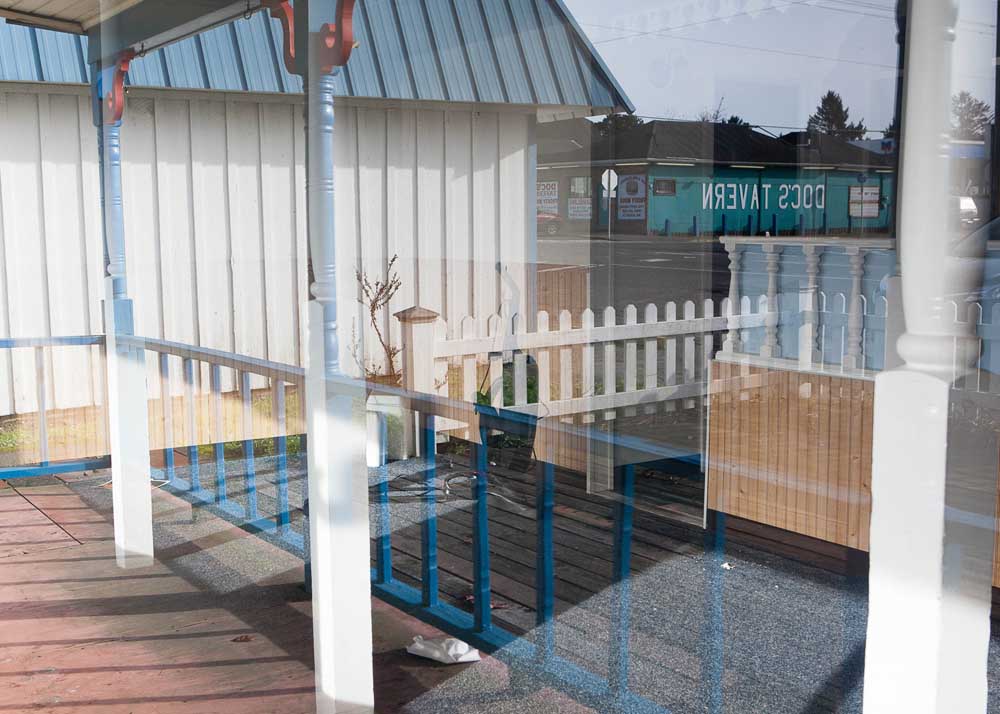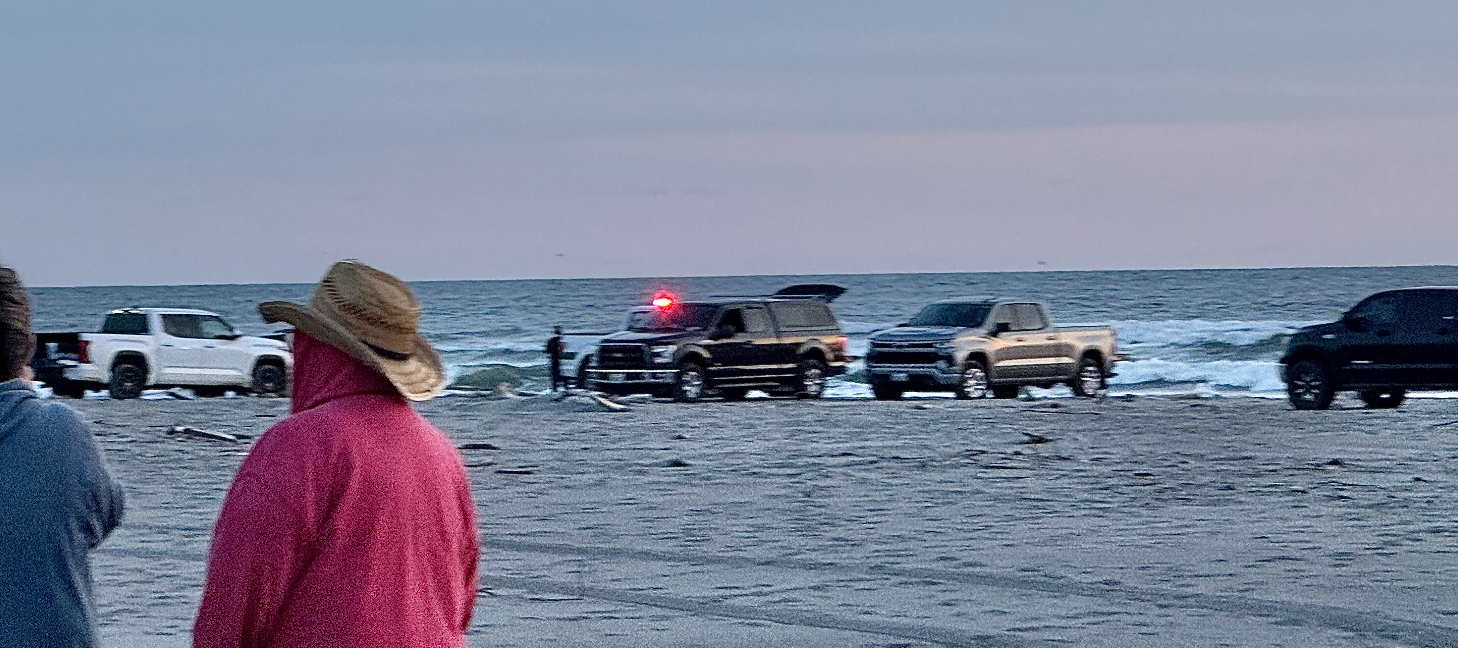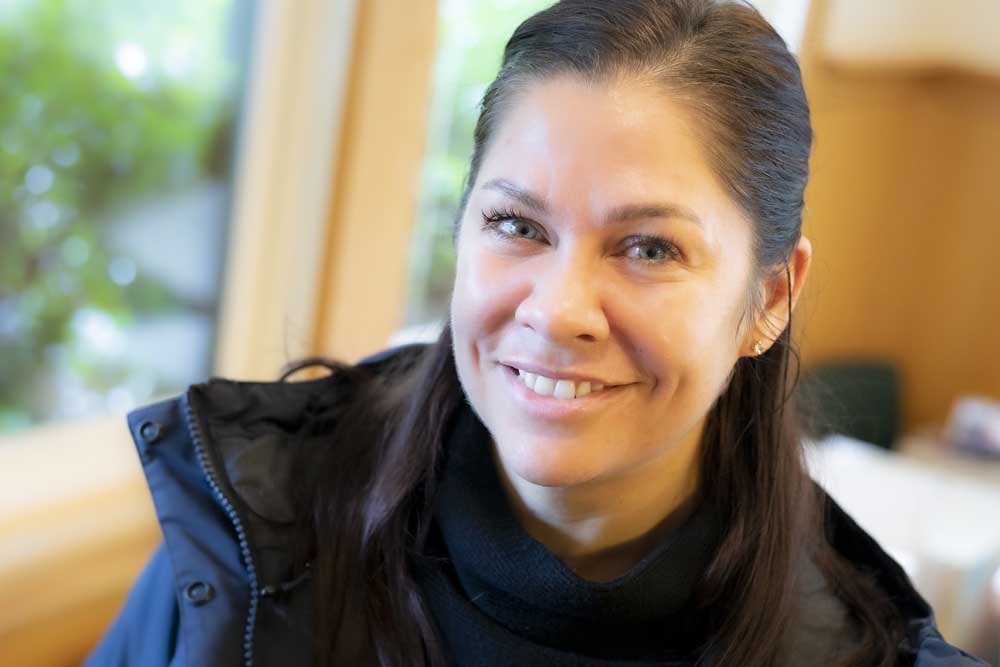Coast Chronicles: The Days of Yore
Published 6:53 am Monday, June 3, 2024

- Its window reflecting Bay Avenue and State Route 103 including Doc’s Tavern, the Dunes Restaurant building was about 35 years old when this photo was taken in 2015. The new owners hoped to give it to someone who would use it or salvage its components so that it didn’t end up in a landfill. It was once one center for community conversations in Ocean Park.
“Memories light the corner of my mind
Misty-water-colored memories of the way we were.”
—Alan and Marilyn Bergman
While waiting for a prescription at the Ocean Park Pharmacy last week, I sat down at the lone picnic table in the now empty lot between the drug store and Sierra’s Café. Watching the traffic go by, I let my mind drift and got to thinking about earlier days and how the north end of the Peninsula has changed over the years. Members of the generational “pioneer families” — the Espy, Hill, Sayce, Holway, Wiegardt, Wilson, Preston, Kemmer, Soule, Williams and others in our midst — have a deep understanding of the changes time has wrought. But even in my 20-year-view, I see the tick-tock of modulation everywhere.
The Dunes and other eateries
In that empty lot the Dunes Restaurant once stood, with its funky wooden front porch, simple down-home fare, inside booths set too close together, and owner Richard Marshall installed at one of the tables just inside the door. No conversation was private. Any remark or question posed from anyone in the cafe could and would be answered by someone at an adjacent table, maybe from one of the morning coffee klatch fellows usually hosted by the Hill brothers.
Nanci Main and Jimella Lucas, of Ark Restaurant fame, came in often for breakfast. As Nanci said, “I liked their pancakes, but any good pancake deserves real maple syrup — so I brought my own and they kept it in the fridge for me.”
Now it’s up to those of us who carry our community’s memories to let these new folks know what is still important to us, what we want to cherish.
I remember many breakfasts there when sister Starla and our mother Virginia traveled over from Yakima. This was when Anita Moe was waitressing at the Dunes, before she bought the video store across from the bus stop and set up her own café. She was so solicitous and sweet with mom because her own mother lived in Yakima, too. (Keeping care of her mom was the reason she finally sold Anita’s — now the Coastal Cafe — to return to Yakima.) We’d walk in the door and Anita would start preparing mom’s hot chocolate before we even sat down; and she always brought mom real butter from the kitchen for her toast. Corn beef hash, an old-fashioned favorite, was mom’s preferred breakfast. I don’t remember Anita ever needing to take our orders — she knew everything.
One of my favorite Dune-jollies was the time the Mouth of the Columbia, known simply as “The Mouth,” a food reviewer for the Daily Astorian (when it really was a daily), wrote up his take on the Dunes’ cuisine. He gave them black marks because they didn’t have a wine list! My guffaws could have been heard in Astoria. As Nanci Main says, “They had white wine and red wine and even that was climbing the mountain.”
Ollie’s Nook, Granny Annie’s, the Shake Shack (on the corner by Busted Knuckles now Ocean Auto), Kopa Wacoma (where Full Circle is now, known for its legendary burgers), BJ Squidley’s (now the Lighthouse Realty building), the Roadside (Chinese food), Adelaides (still empty — how we miss your coffee!), and, of course, the Ark: there has been a wild variety of eateries come and go on the north end over the years. Someone should capture the history before all the folks who sat at those tables telling stories are gone.
Traditions
The fabric of the Peninsula shifts before our eyes, and new folks who move to town don’t know what existed before. It’s like a patchwork quilt or layers of an archeological dig where buildings are created on top of other buildings that exist now only in our minds. It’s our memories attached to all those now invisible places that keep them alive.
Places can take on iconic importance. Many of the old houses on the Peninsula used to be known for the families that built them or for some historical and unique feature: like the Wreckage, the Charles Nelson House, the Wiegardt House, kitty corner from the Fire Station (it had a “W” on the gate for years); or even Doc’s Tavern, or Jayne Bailey’s Bakery and Cafe. Many times these are used as points of direction. Just yesterday I got this text about taking a photo for an upcoming column — “Meet us at the Whalebone House…” — I knew exactly where to go.
Several days after the Big Gale of ’07-08 when Red Cross finally made it into town, they had no idea how to navigate the Peninsula. Directions like “Go up the back road and turn at the Nahcotta Post Office,” meant nothing to those out-of-towners. When we lose these historical icons, we lose some of the richness of our small community; we lose some of our coherence over time. Those of us who’ve been around for awhile carry these archeological memories of what used to be, and that gives us a deeper view of our world.
I’ve been told that in the “old days,” not so long ago, all the fishermen or oystermen used to go down to the ocean on Bay Avenue to watch the sunset and trade gossip; that you recognized people by their trucks. Driving by someone — it wasn’t a wave of recognition that was given — you’d simply lift a finger, or part of your hand off the steering wheel. We’re cool here.
In downtown Long Beach, the corner with the go-carts has somehow survived the vicissitudes of time. I remember those from our family vacations in the ‘50s. Even though the race-track has been updated, those go carts are still buzzing around. And they continue to be a directional beacon — “Turn at the go-carts.”
People
Losing places is difficult, but losing people is even harder. I still remember talking to Phil Stamp, Sr. on the day the Nahcotta Post Office closed. He’d been getting his mail there his whole life. And, when he was a kid, he planted that giant larch tree on the corner of Sandridge and 267th. Sojourner Smith, consummate gardener, lived on that property when I moved back to the Peninsula, and she told me that Phil told her that that tree struggled for many years until it broke through the hardpan into the water table below. Then it shot up — and it’s still going strong, outliving both of them. I miss Sojourner: we had a well-trodden pathway between our homes that is now overgrown with ferns and salal.
Then there’s the Hanners — Pete and Martha — who lived across the street from me. We’d often have them over for dinner when mom was in town. There wasn’t a gathering without music. Pete would start an old tune that we all mostly knew the words for and we’d all sing along. Or he’d sing a special song for one of us on a birthday celebration. Martha left first, then my mom, then some years later, Pete. There’s no replacing those times or those goodhearted people.
People and places capture what’s special about a small town, and, of course, this changes over time. We seem to be beginning a new era of discovery — that is our own discovery by other people — we’ve been here all along. We’ve had the privilege of being a hidden gem for a long time. But now we have multi-million dollar houses. Trees coming down everywhere. New upscale eating establishments. Now it’s up to those of us who carry our community’s memories to let these new folks know what is still important to us, what we want to cherish.
So I ask you, “What do we want to keep and what do we hope to change?” Let your voices be heard.





